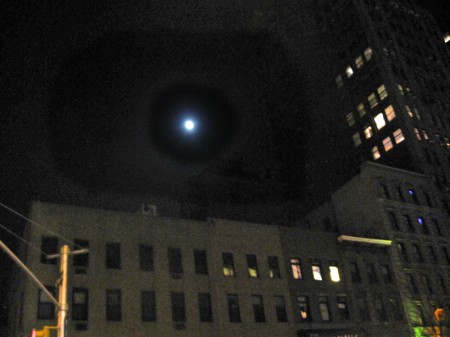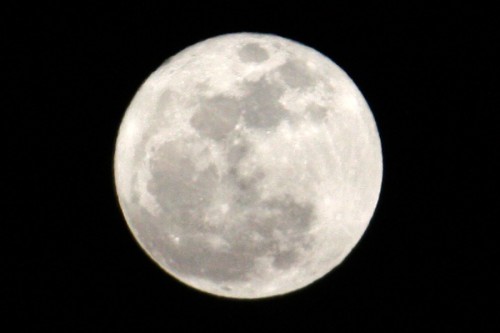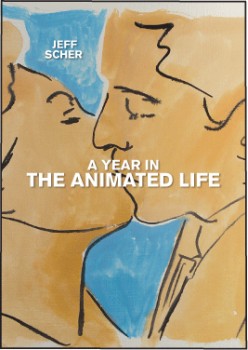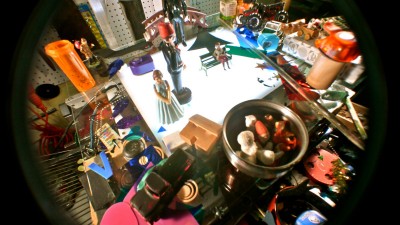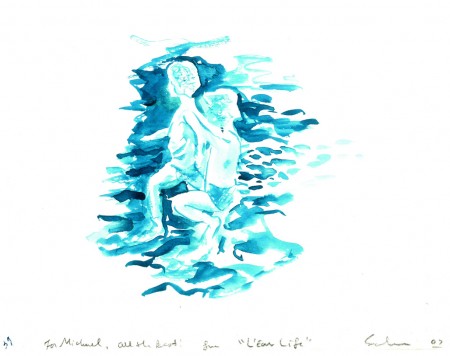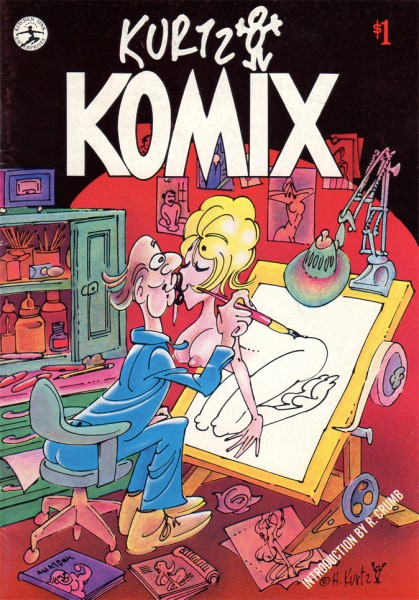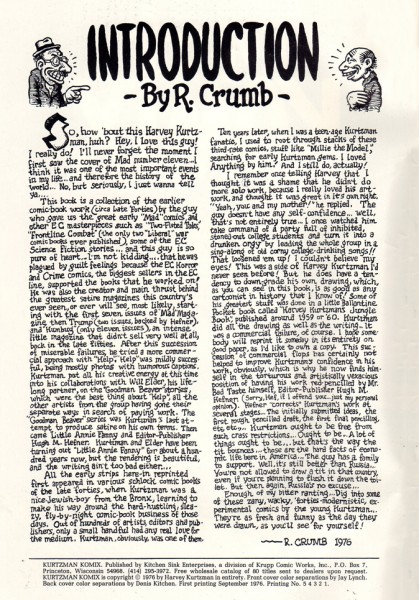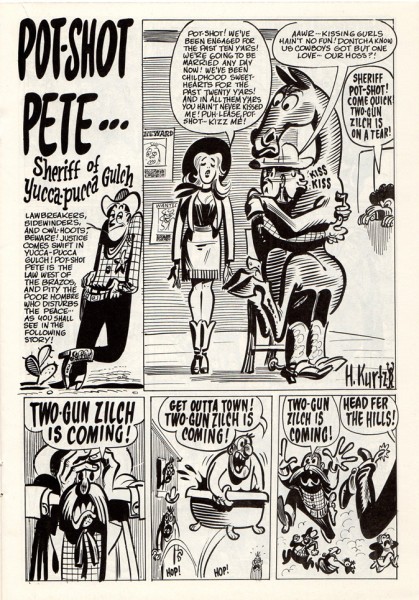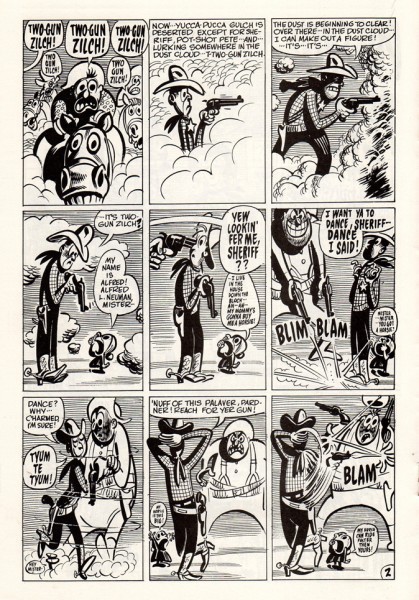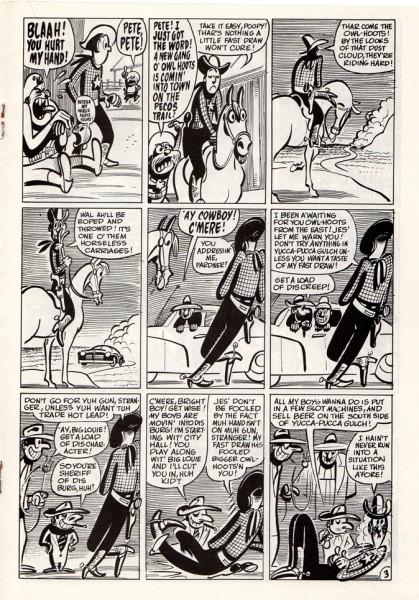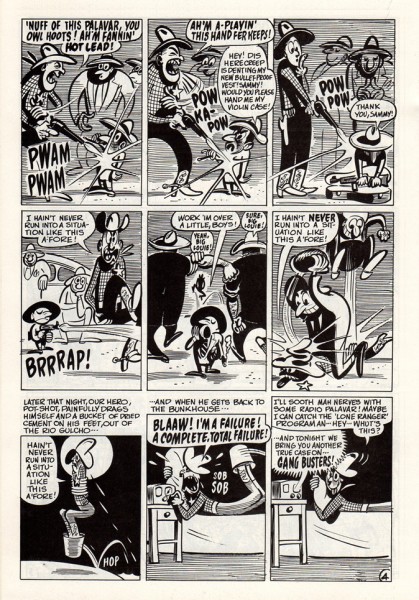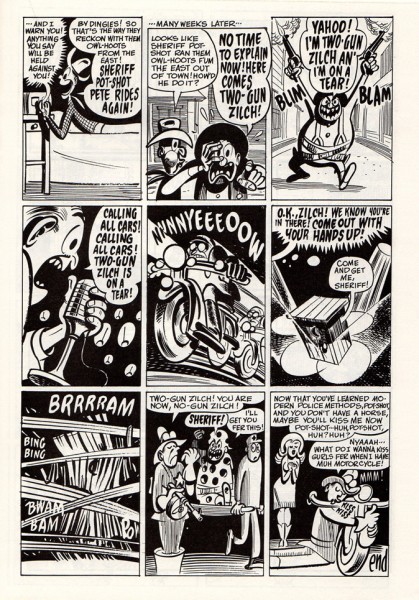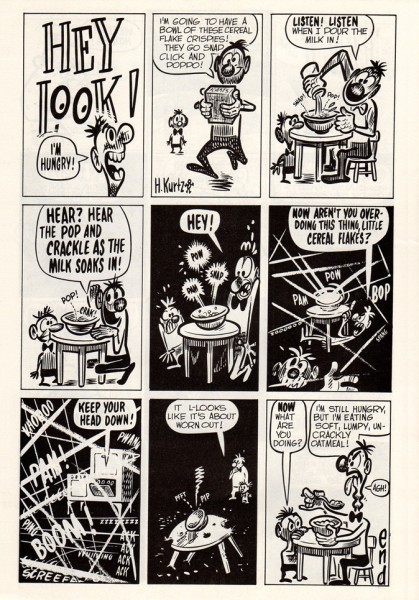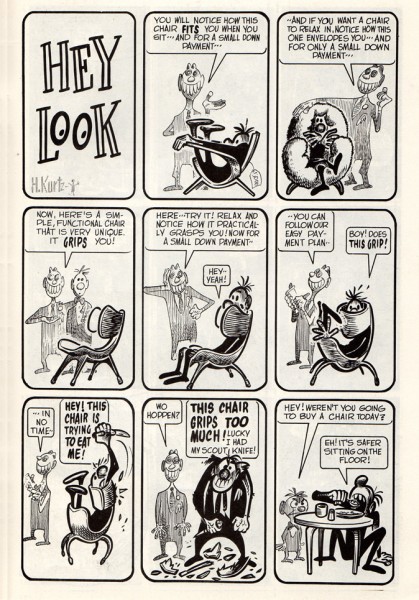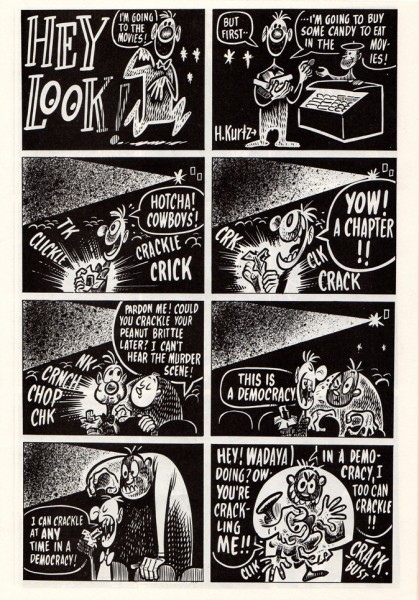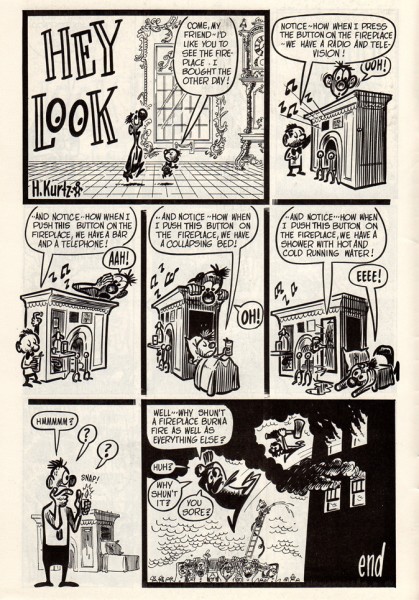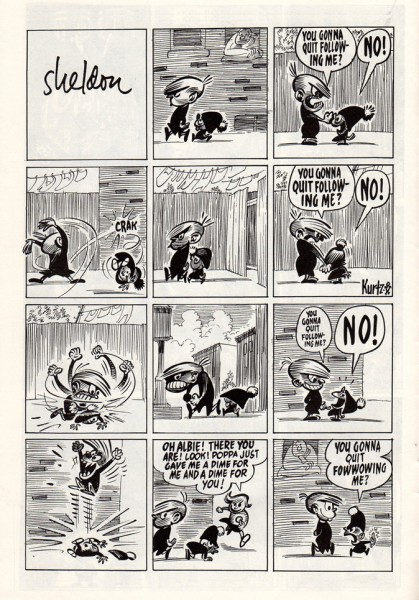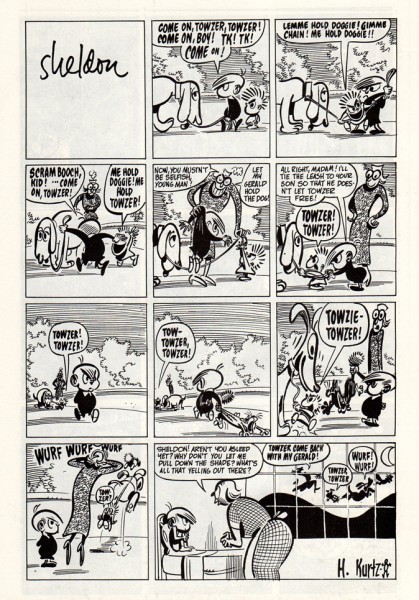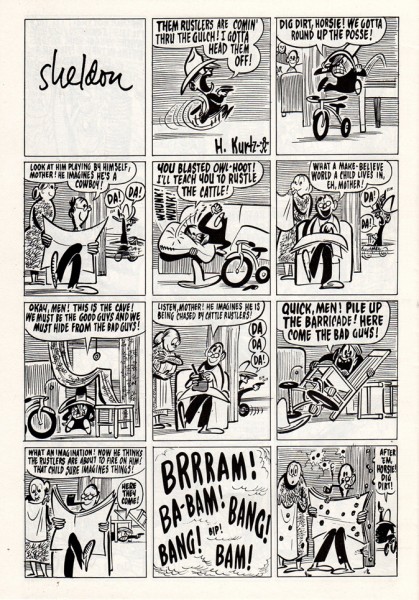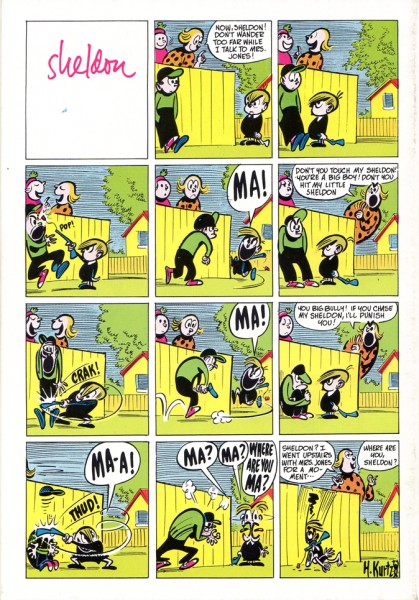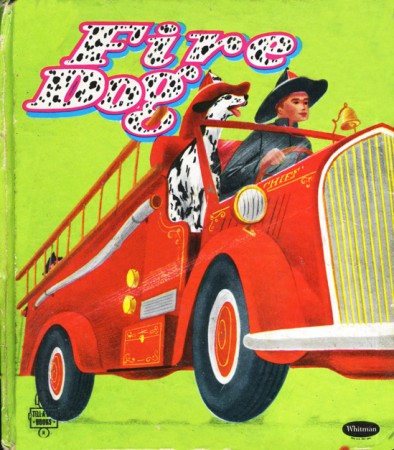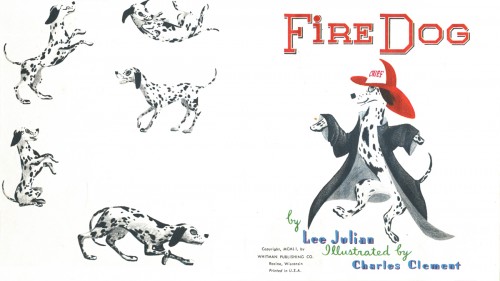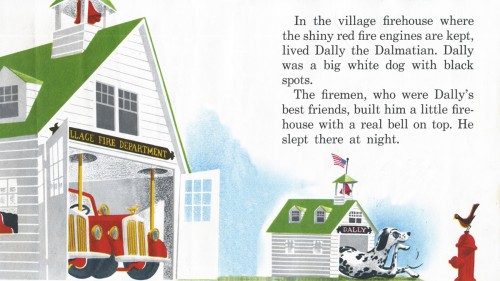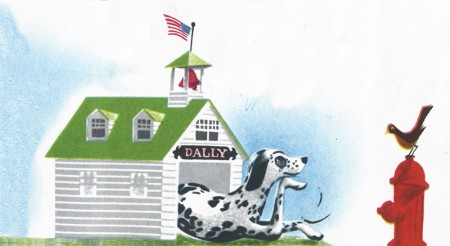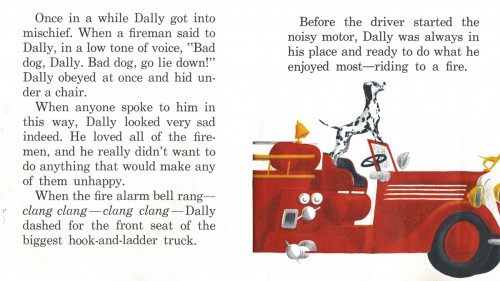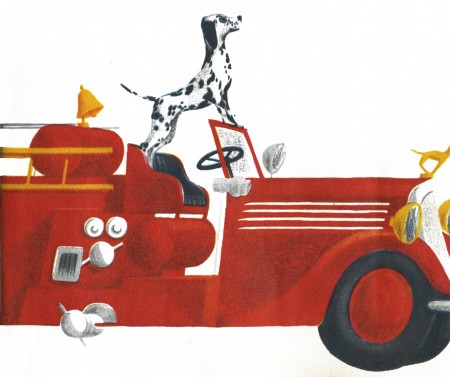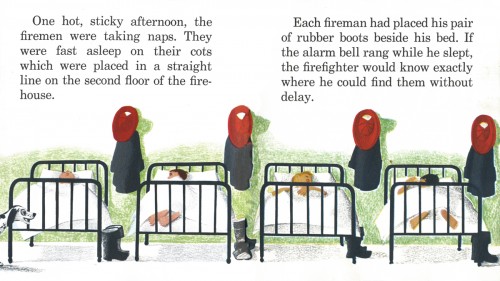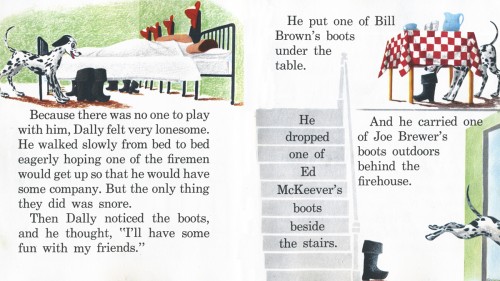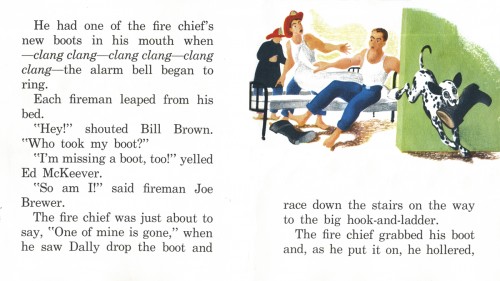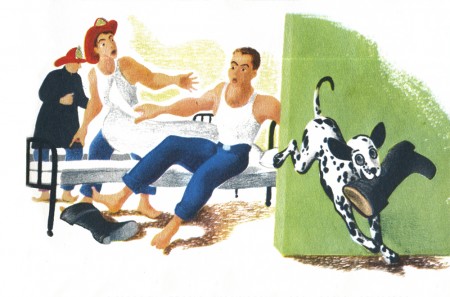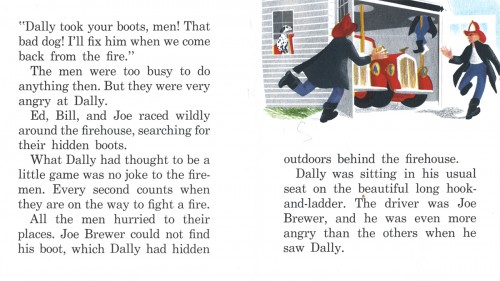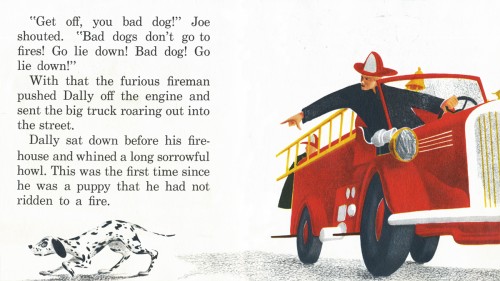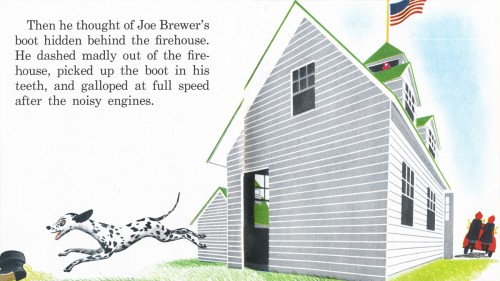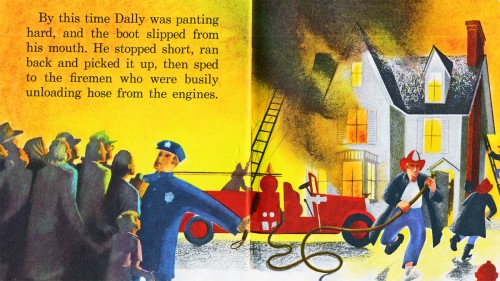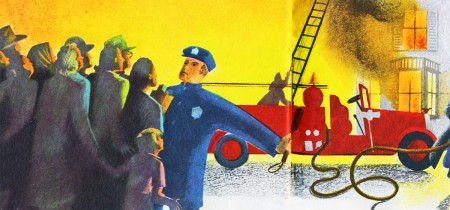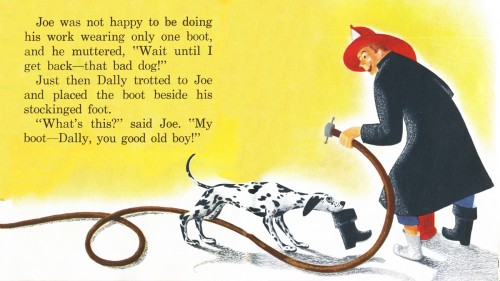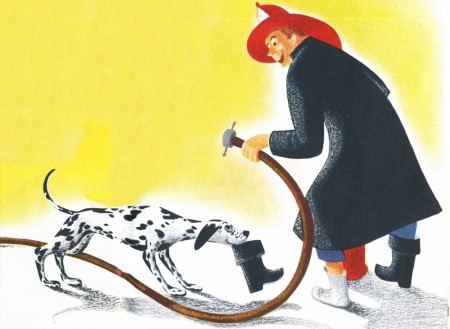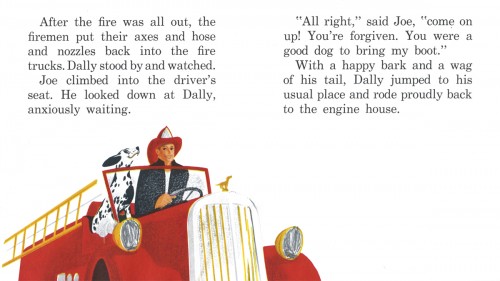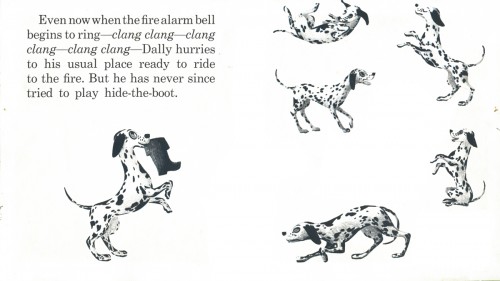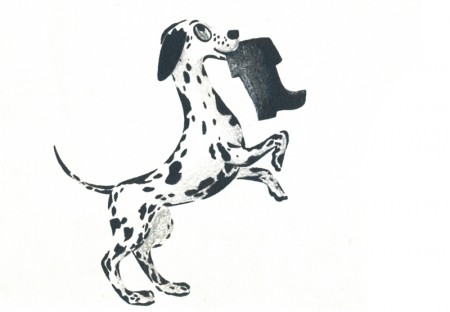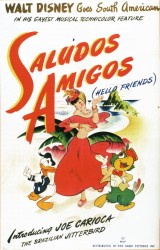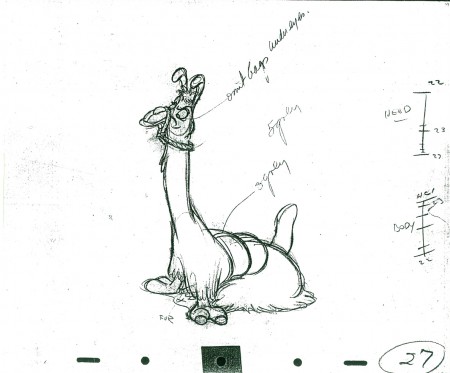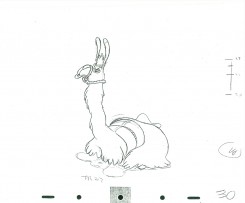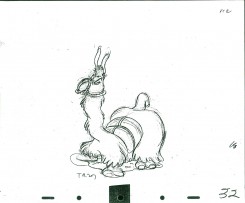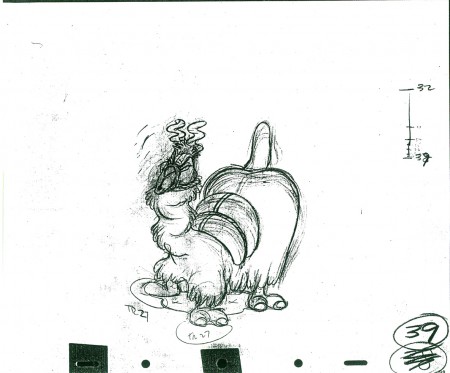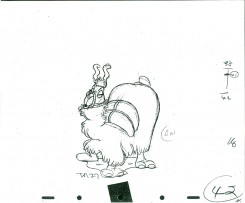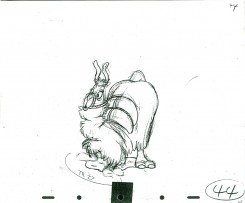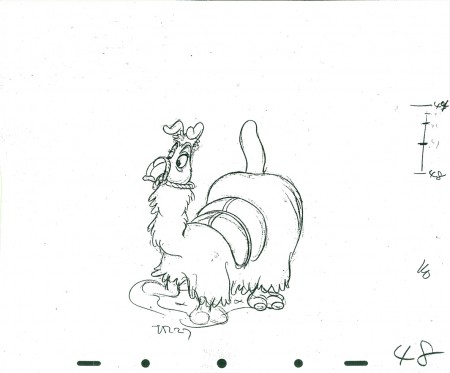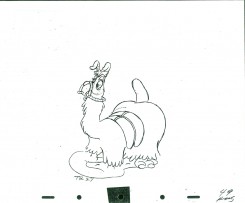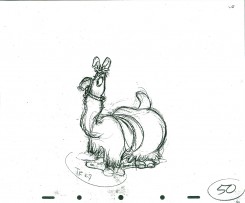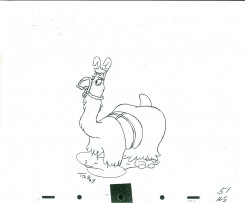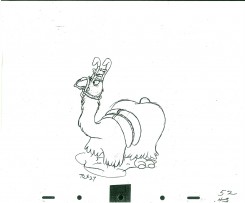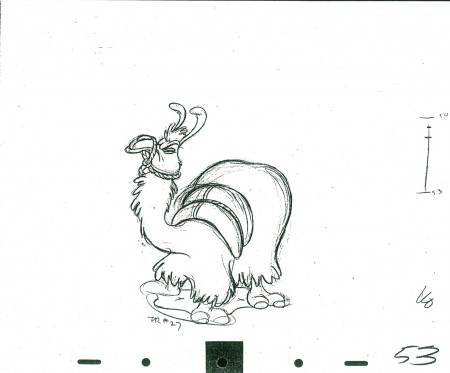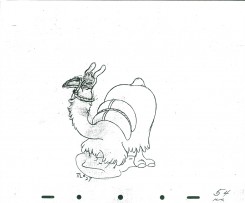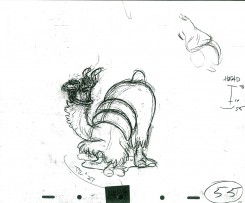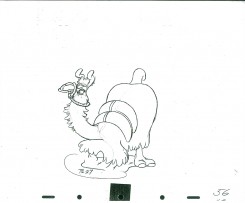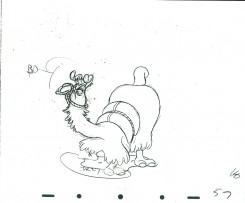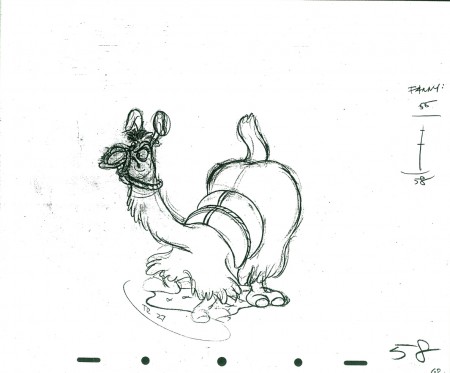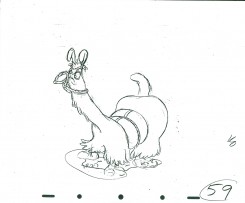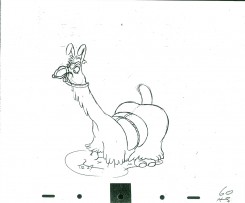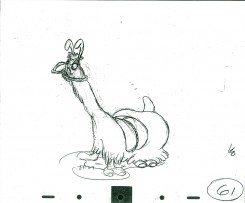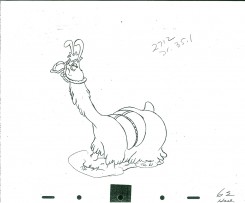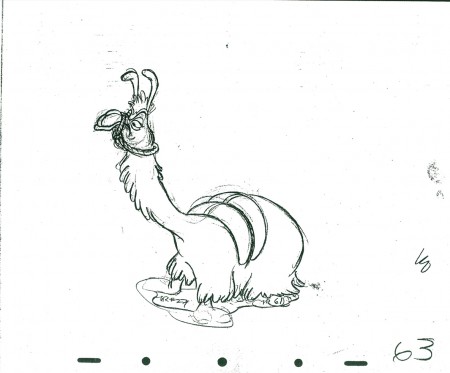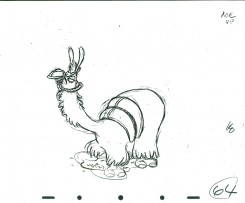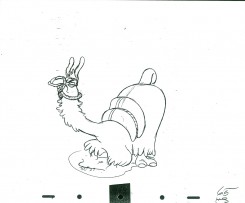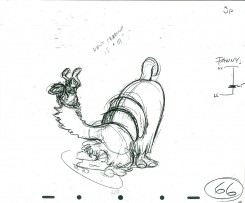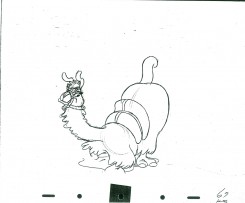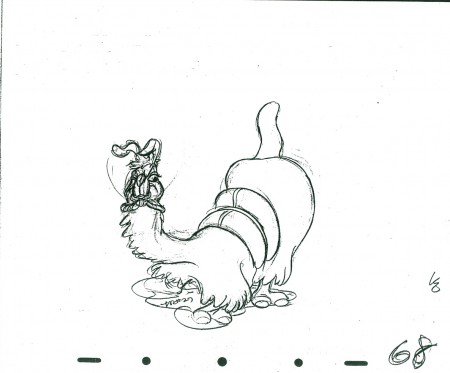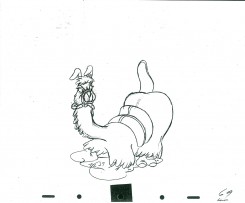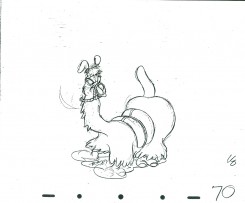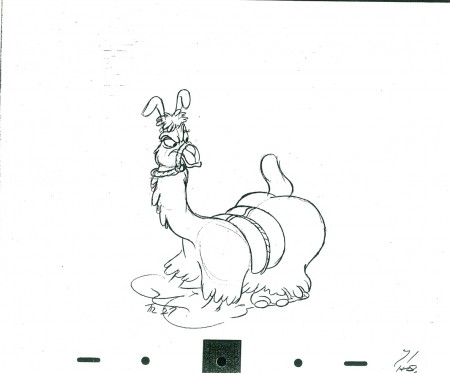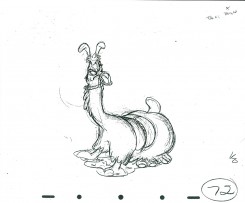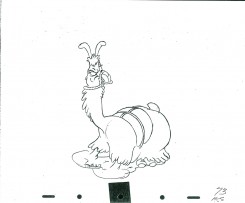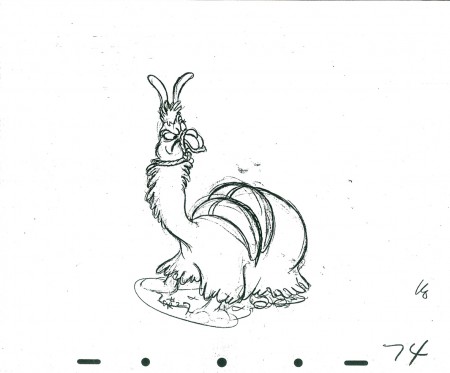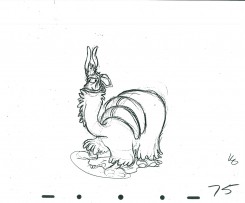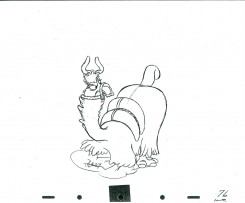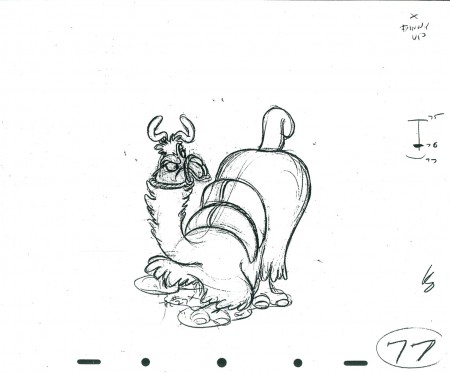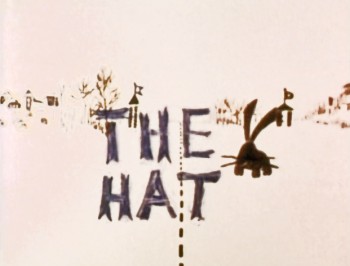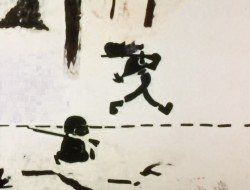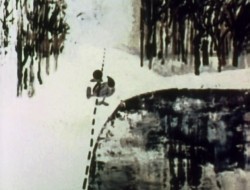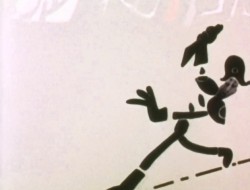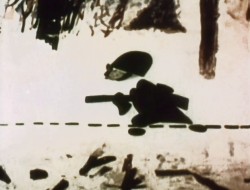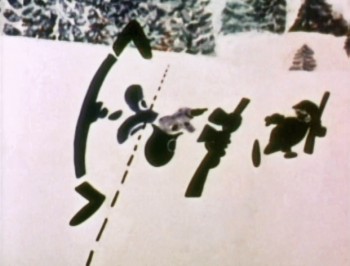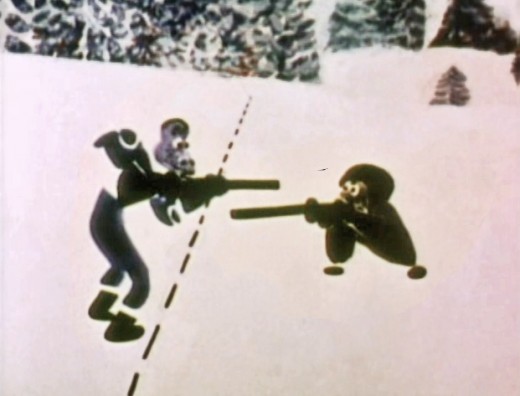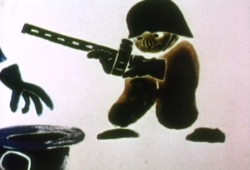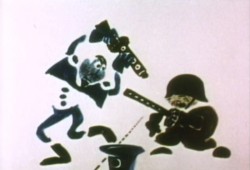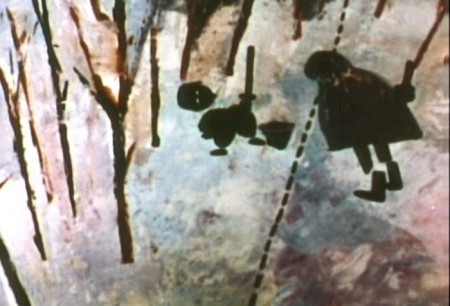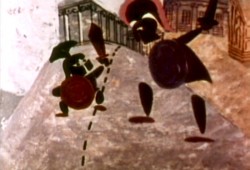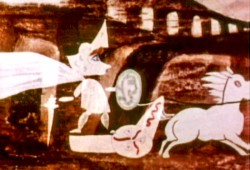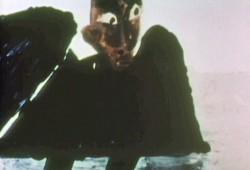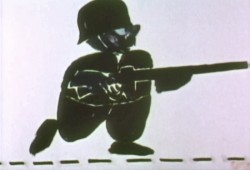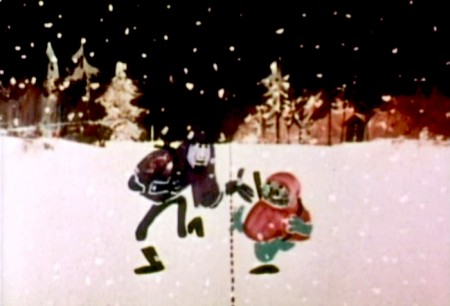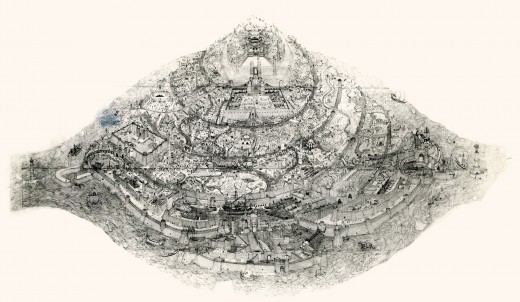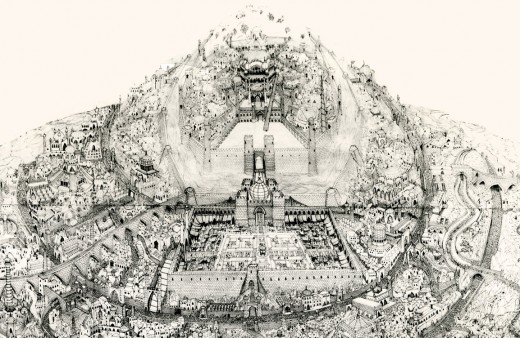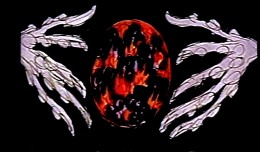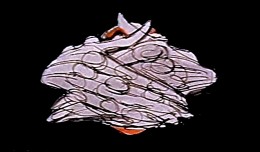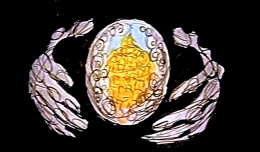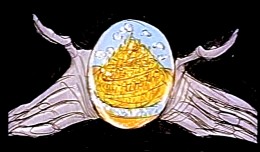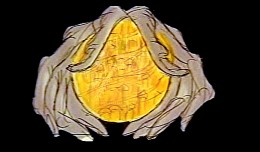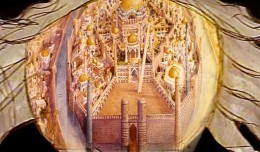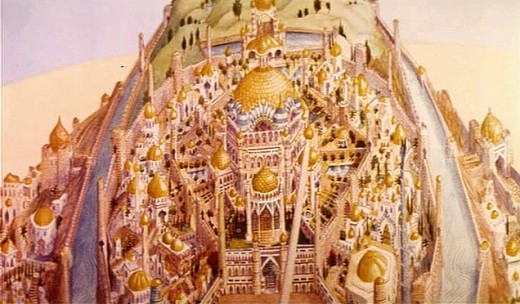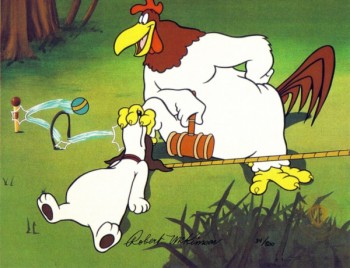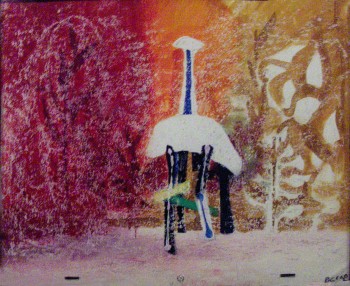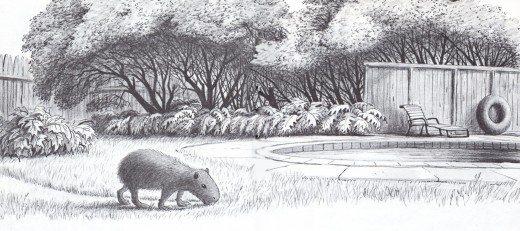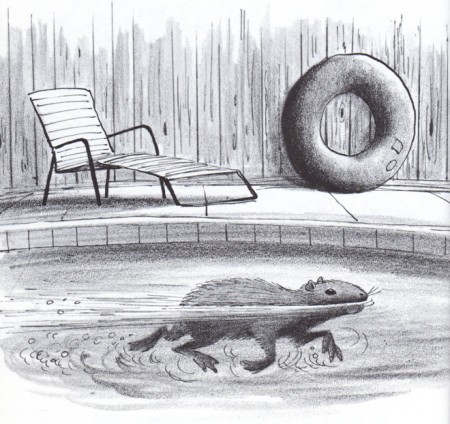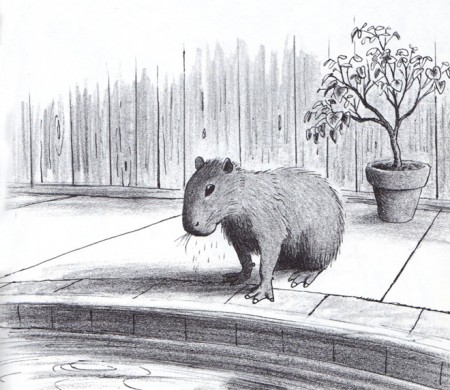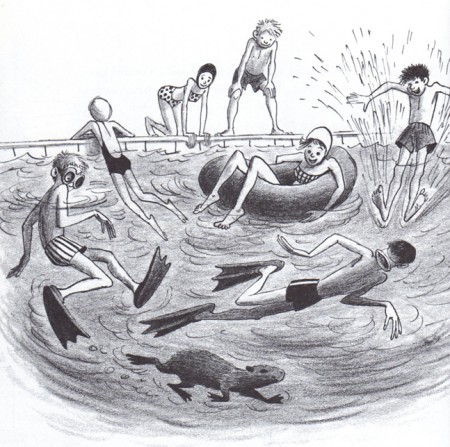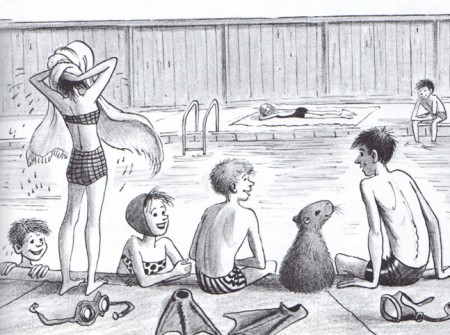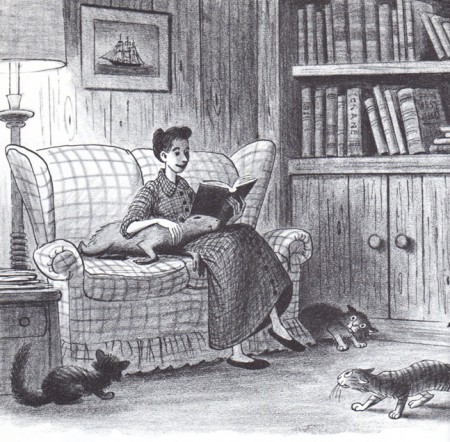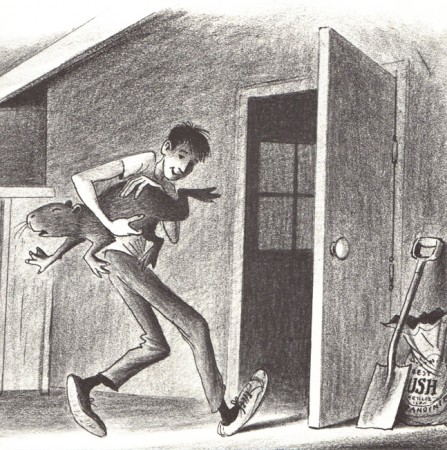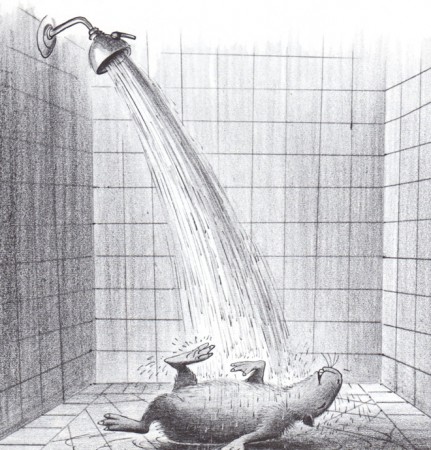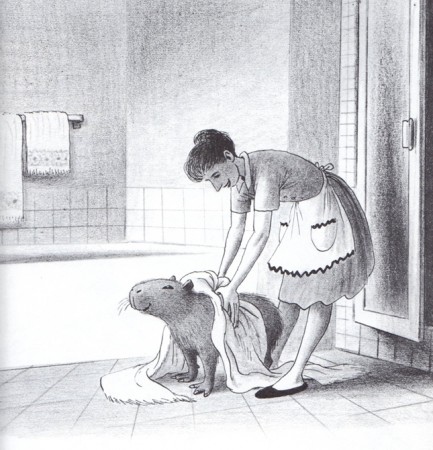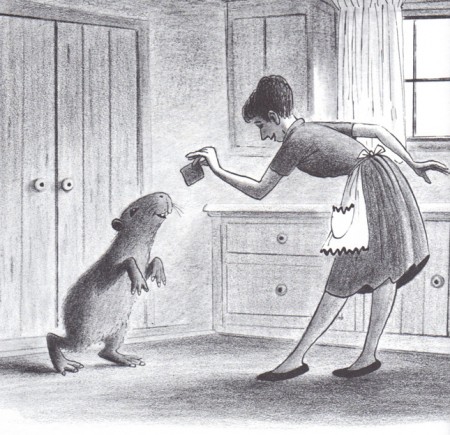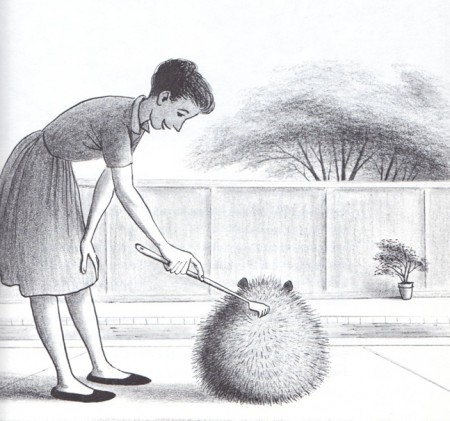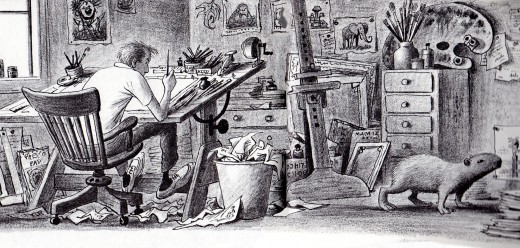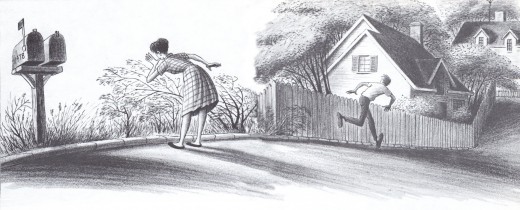- Mike Barrier recently posted two interviews on his website: Robert McKimson and John Hubley. On Saturday, I added a few small comments about the interviews. This caused a couple of comments from readers who got into the McKimson interview with some strong statements about McKimson’s treatment of animator, Rod Scribner. Scribner had taken a 3 year break from animating to treat his Tuberculosis. When he came back to the studio, he no longer was able to work in Clampett’s unit – he’d left the studio -, so Scribner found himself, ultimately, in Robert McKimson’s group. Seen as a wild animator by McKimson, Scribner was molded into something much less violent. It seemed the juice was taken out of his animation.
The question was whether it was the TB, heroin, electric shock therapy, or just McKimson that caused this enormous change in Scribner’s style. If we go back to the interview, I think we can find the answer. In McKimson’s words:
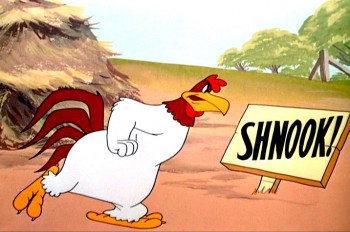 I had one animator, who thought he was better than he was, and I’d just flip it through, and I’d say, well, this has got to be changed, it won’t work this way. He said, “I think it will.” I said, “All right, Rod [Scribner], you go and test this”—cheap negative testing—”and we’ll run it on the movieola, and I’ll show you what I mean exactly.” He said, “All right, but I know it’s right.” Every three to six months, he’d come up with one of these things. So I’d just tell him to go ahead and shoot it. We’d put it on the movieola and run it through and through, on the loop; every time, he’d say, “Yeah, yeah, I see what you mean.” And then the next time, he’d say, “Well, I think it’s right.” But that was the only way it worked against me. I had to take guys with a little less ability and try to make something out of them.
I had one animator, who thought he was better than he was, and I’d just flip it through, and I’d say, well, this has got to be changed, it won’t work this way. He said, “I think it will.” I said, “All right, Rod [Scribner], you go and test this”—cheap negative testing—”and we’ll run it on the movieola, and I’ll show you what I mean exactly.” He said, “All right, but I know it’s right.” Every three to six months, he’d come up with one of these things. So I’d just tell him to go ahead and shoot it. We’d put it on the movieola and run it through and through, on the loop; every time, he’d say, “Yeah, yeah, I see what you mean.” And then the next time, he’d say, “Well, I think it’s right.” But that was the only way it worked against me. I had to take guys with a little less ability and try to make something out of them.
McKimson, the director, couldn’t work with the strong presence of Scribner – in fact he saw it as bad animation – and had to train Scribner into settling down to a less noticeable style of movement. Perhaps, Scribner was well ahead of his time and McKimson was behind the times?
The two animators I see closest in style to what Scribner did were Bill Tytla and Jim Tyer. All three worked in very different ways, and Scribner had more in common with Tytla and Tyer than Tytla and Tyer had with each other.
I believe there are two very different styles of animation: in one, all movement and thought is designed for the development and construction of the character; in the other, 2D animation is seen as a graphic challenge, and the shape and graphics of the character are above and beyond even the character, itself.
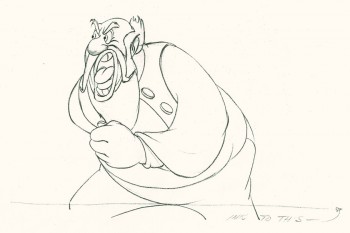 Bill Tytla worked at Disney for all his famous years. Within those walls the character was EVERYTHING. Tytla found that by distorting the character, in a very malleable way, he was able to accent traits of the characterization he was aiming for. Hence, a Stromboli would completely distort between two poses to accent a bit of violence. The character would come back together, on model, as soon as the strong gesture was made. Normal viewers, not looking for the distortion, didn’t see it but probably felt it. The strength of the movement was successful. I think Tytla saw this as a way of getting his animated character into the model Stanislavsky had suggested. This theory of acting was just starting to break through the Hollywood gates.
Bill Tytla worked at Disney for all his famous years. Within those walls the character was EVERYTHING. Tytla found that by distorting the character, in a very malleable way, he was able to accent traits of the characterization he was aiming for. Hence, a Stromboli would completely distort between two poses to accent a bit of violence. The character would come back together, on model, as soon as the strong gesture was made. Normal viewers, not looking for the distortion, didn’t see it but probably felt it. The strength of the movement was successful. I think Tytla saw this as a way of getting his animated character into the model Stanislavsky had suggested. This theory of acting was just starting to break through the Hollywood gates.
At least, this is my theory. John Hubley once told me that “… a small group of them at Disney were strongly into Stanislavsky. The rest,” he said, “couldn’t spell it.” I know that Hubley and Tytla were friends as was John Hench, and I’m sure they are who he meant. All you have to do is look at the Devil in NIGHT ON BALD MOUNTAIN for obvious evidence of this.
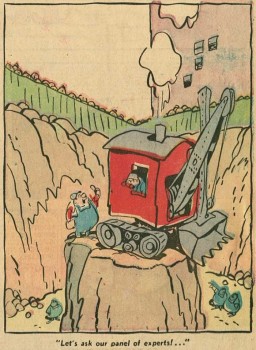 Rod Scribner seemed to have an innate sense of this, but took it a bit further. I don’t think he thought of Stanislavsky, but he did think of graphics. In Barrier’s masterpiece of a book, Hollywood Cartoons, he tells a story about Scribner and Clampett. Apparently, Scribner approached Clampett and asked if he could introduce a “Lichty” style into his animation.
Rod Scribner seemed to have an innate sense of this, but took it a bit further. I don’t think he thought of Stanislavsky, but he did think of graphics. In Barrier’s masterpiece of a book, Hollywood Cartoons, he tells a story about Scribner and Clampett. Apparently, Scribner approached Clampett and asked if he could introduce a “Lichty” style into his animation.
George Lichty was a well-known comic strip cartoonist (Grin and Bear It) who had a very loose, linear style. Scribner, obviously, was going for a two dimensional graphic style that he thought would work well in animation. Clampett understood what Scribner wanted and decided when to go along with it. It would take some careful editing to get it to work. Consequently, Clampett would reserve specific scenes and times to use the style which Scribner developed for those particular scenes the director gave him.
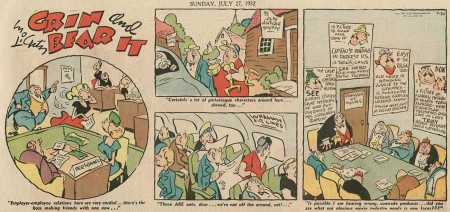
Lichty’s style
Consequently, Clampett was using Scribner, just ast Tytla designed for himself, getting the most out of the graphics without calling attention to the wild change in stylization. This first appeared in A Tale of Two Kittens then in Coal Black and de
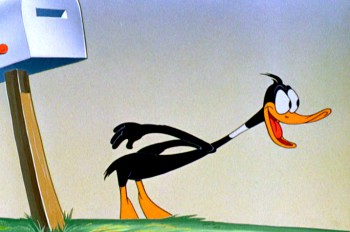 Sebben Dwarfs. For me, The Great Piggy Bank Robbery is one of the highlights of this wild style as Daffy Duck transforms violently before our eyes – for frames only – before returning to himself. Even then, it isn’t quite the same Daffy that other animators drew. The two, Clampett and Scribner, used it outrageously in many of their films together; some work, some don’t.
Sebben Dwarfs. For me, The Great Piggy Bank Robbery is one of the highlights of this wild style as Daffy Duck transforms violently before our eyes – for frames only – before returning to himself. Even then, it isn’t quite the same Daffy that other animators drew. The two, Clampett and Scribner, used it outrageously in many of their films together; some work, some don’t.
Robert Mckimson was a mundane and lackluster director who, quite frankly, didn’t understand the stylization that Clampett and Scribner had developed. It’s no wonder McKimson broke it out of Scribner’s art when he became the director. To him it was just distortion, for its own sake.
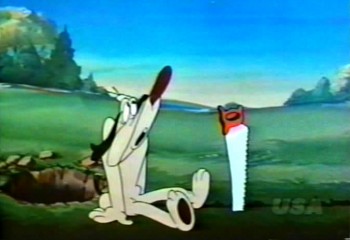 Jim Tyer was a different animal. His distortion seems to be completely and wholly graphic. He doesn’t use it to develop a character; he uses it as the embodiment of the character. The character starts off-model and goes from there wildly and totally beyond the model sheet. It’s wholly graphic embellishment, and character be damned. This is something that Bill Tytla would have disliked, and many others within Terry’s studio as well. I remember Johnny Gentilella telling me that they couldn’t keep Tyer on model. Another assistant animator told me it was a hell of a job for her to bring Tyer’s character back, closer to the model sheet. I can imagine.
Jim Tyer was a different animal. His distortion seems to be completely and wholly graphic. He doesn’t use it to develop a character; he uses it as the embodiment of the character. The character starts off-model and goes from there wildly and totally beyond the model sheet. It’s wholly graphic embellishment, and character be damned. This is something that Bill Tytla would have disliked, and many others within Terry’s studio as well. I remember Johnny Gentilella telling me that they couldn’t keep Tyer on model. Another assistant animator told me it was a hell of a job for her to bring Tyer’s character back, closer to the model sheet. I can imagine.
All three of these animators have gained fame in the current state of the art. Young bloggers post frame-by-frame detailed distortions by Tyer, animators break down Scribner’s work with Clampett to see how exactly he did it. Tytla’s work is praised to the hilt drawing by drawing with delight taken in every distortion.
I have to say that I have always been a fan of Tytla’s and Tyer’s work. When I started doing animation professionally, I found people praising Tytla and putting down Tyer. I kept my love of Tyer secret. Over time, I grew to love Scribner. With all three I studied their animation frame by frame over and over. I was pleased that the folk who did The New Adventures of Mighty Mouse on CBS had found Tyer and used him as a model. To me it was the perfect model for series animation, and, no doubt under the influence of Ralph Bakshi they glorified their model.
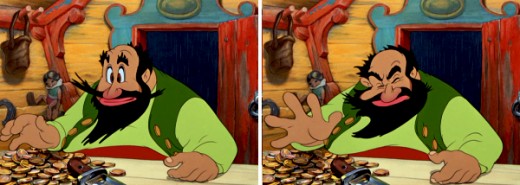
It is interesting how many try to imitate the styles of all three and very few approach the level of any of them. I hope those imitators keep triying. To me, it’s the essence of 2D animation, and perhaps within this graphic medium one of those imitators will break through and we can relish such achievements. Achievements which are virtually impossible in the puppet-computer animation of Pixar and Dreamworks. But within that imitator, 2D animation will stay alive.
A couple of screen grabs were borrowed from the sites of
Thad Komorowski and Kevin Langley. My appreciation and thanks.
.
